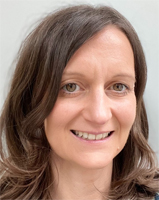Master The CMC-To-C-Suite Transition

By Matthew Pillar, Editor, Bioprocess Online

If interviewing hundreds of C-level leaders of new and emerging biopharma companies has taught me anything, it’s taught me that leadership opportunities in this space are plentiful for those who aspire to it. It’s also taught me that it takes a special kind of person to successfully transition from science, academia, or biopharmaceutical operations into leadership of an early-stage biopharma company.
When Sarah Howell, Ph.D. joined Arecor as COO back in 2011, she brought with her many years of drug development experience—and commercial success—honed at big pharma companies including GSK, UCB, and BTG. What she didn’t bring with her was experience in the C-suite. Her time in the big-leagues had been spent on another C-level: chemistry, manufacturing, and controls (CMC).

On episode 106 of the Business of Biotech, Howell shared some insight into her transition from CMC to the C-suite, which happened, by the way, on the heels of becoming a mom to twins in 2013. Her experience and advice might prove valuable to those seeking the same career trajectory. Here’s a snippet of the conversation.
Business of Biotech: What did you encounter in your first role as CEO that perhaps wasn't in the 10-ring or wheelhouse of what you had been doing for so long?
Dr. Howell: I think in those roles, you've got to make sure you’re leading, and that you’re delivering to a certain extent through others as opposed to looking to take hold of everything and do everything yourself. If you want to grow a company, of course, it’s important that you have a strong team around you, that you support them, and give them the tools that they need to deliver. Otherwise, you become the bottleneck. That's an important transition to make, but it’s not an easy one when you're used to managing yourself and your own energy and time and delivering and being accountable for that delivery. Making sure that happens for other people requires a different skill set. You have to be careful though that you don't keep diving into the detail and disrupting, to a certain extent, that delivery and that ecosystem.
Business of Biotech: What did you learn when you were in the CEO role that others making a similar transition should know?
Dr. Howell: Most noteworthy is that I didn't realize just how healthy an attitude toward risk is required of a CEO. That was inherent within me, but I’ve realized just how important it is. That doesn't mean you're totally reckless and taking risks everywhere, but you’ve got to take some risks to succeed and to grow. You have to be comfortable with that because quite frankly, if you're not, you'd never sleep at night as a CEO if you’re worries about every decision that you've made, particularly where you don't have all of the information. That attitude to risk, and becoming comfortable with it, grows with experience and expertise, because you can draw more on your past experiences and make decisions based a little bit more on gut feel than you would've done early in your career. But if you’re a real worrier and you’re very risk averse, I don't think the CEO role would be a good fit. It’s something I'd never heard anyone really speak about, so I didn't realize it was so critical to survival as a CEO.
Business of Biotech: After fewer than four years in the COO spot, you transitioned to CEO. How did that come to pass?
Dr. Howell: It came at a pivotal moment in the company’s go-forward plan. Up until that point, we’d been further developing the Arestat technology, a formulation platform to partnering and building relationships with pharmaceutical companies. We’d developed a baseline of our technology licensing model and we were working out the value that's attributed to the technology for the pharmaceutical companies we partnered with. There was a huge amount of change in that time. We'd gotten to a stage where we could routinely deliver enhanced versions of our partners’ products, and these are some of the largest pharmaceutical companies in the world.
That’s when it became a question of, ‘we know that the technology can do this and we know that we can do this, why don't we select some products where there's a real patient need, a good fit with the technology, and start developing some of these products ourselves?’ Of course, that meant taking more control of the products and taking them closer to market and, ultimately, to patients and in turn, retaining more of the value we were building into the business. With my background in pharmaceutical product development, it was a perfect time and fit for me to take over as CEO.
Business of Biotech: To what degree do you still lean into your drug development background on a day-to-day basis, or find yourself rolling up your sleeves and getting involved in the development of products?
Dr. Howell: I get involved where we’re looking at patient need. When we’re asking what, ultimately, we’re striving to achieve and why. You've got to understand what the patients need is, and what data we would need to develop to demonstrate that we're meeting that patient need. That takes quite a lot of pharma experience, and we've got depth of experience across the company in that area, but it also has to be commercially viable. That's important not just from our shareholder's perspective and growing the business, it's really important for the patients as well. If it's not commercially viable, that enhanced version of the products is ultimately not going to make it to market.
It's really important that you combine an assessment of the patient need what its going to take to develop it with what it’s going to cost and, once it gets to market, who's going to pay for it. It's a real combination of commercial and science expertise.
Business of Biotech: Is taking that CMC-level development experience into the CEO role sometimes a blessing and sometimes a curse?
Dr. Howell: Yeah! You understand the challenges within pharmaceutical development, and I think sometimes my CMC and development teams probably wish I'd stop asking questions! But that's really part of kicking the tires on the strategy here and understanding if there’s a bump in the road, or a delay, or something that needs to be solved. With that CMC background, you can bring some intellectual capital to the table to help resolve that, and also to understand when the team has thought everything through and gotten to the right, best place. You've got to trust your team. You've got to have a great team around you and ensure that you don't become the bottleneck on progress.
Learn much, much more about Dr. Howell, her work at Arecor, and the Arestat platform on episode 106 of the Business of Biotech.
